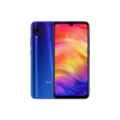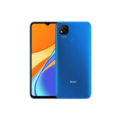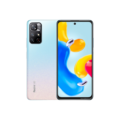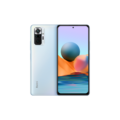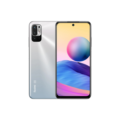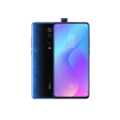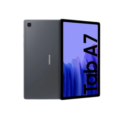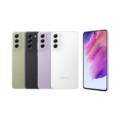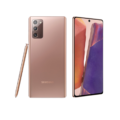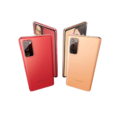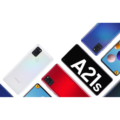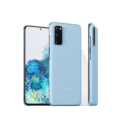Redmi 8 Harga Malaysia
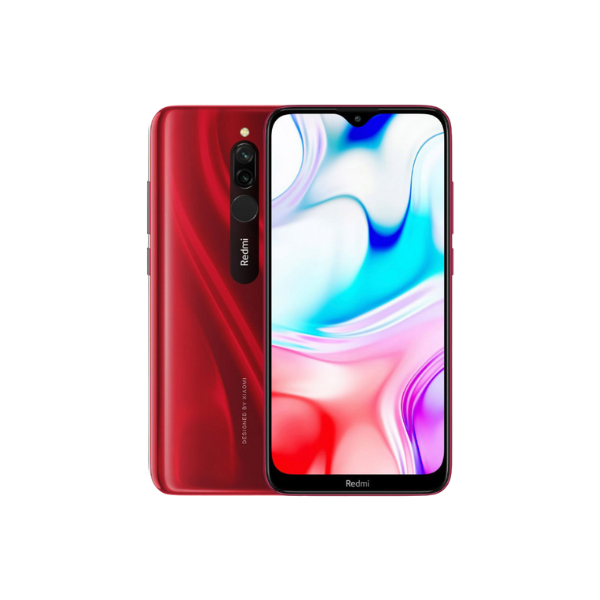

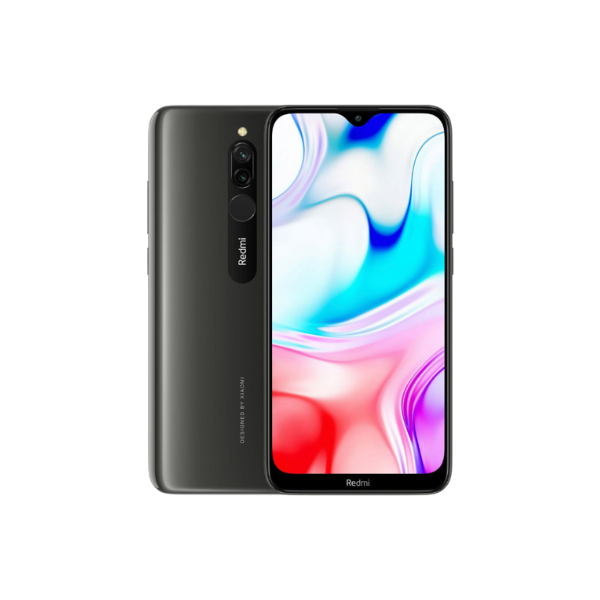
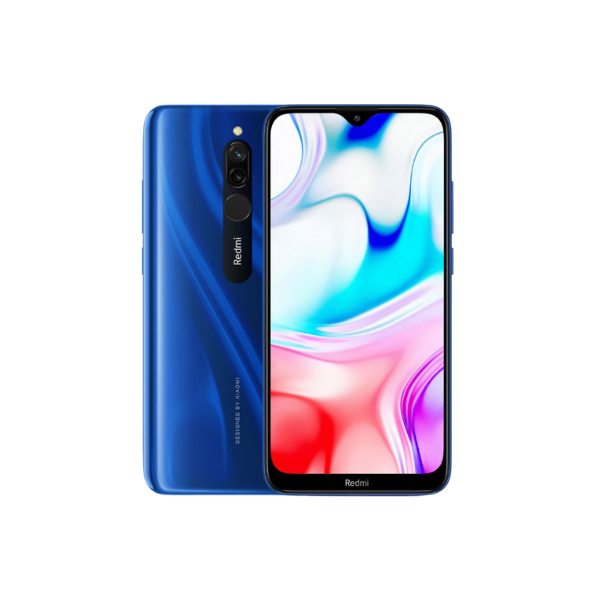
- CPU: Qualcomm SDM439 Snapdragon 439 (12 nm)
- RAM: 3 GB, 4 GB
- Storage: 32 GB, 64 GB
- Display: IPS LCD
- Camera: 12 MP Single Camera
- OS: Android 9.0 (Pie), MIUI 12
- AnTuTu Total Score: 118.350 (v9)
Redmi 8 Harga Malaysia Spesifikasi Malaysia
General
| Device Type | Smart Phone |
| Model | M1908C3IC, MZB8255IN, M1908C3IG, M1908C3IH |
| Announced | 09 October, 2019 |
| Released | 12 October, 2019 |
| Status | Available |
| Price | RM419 - RM488 |
Design
| Type <strong>Design Type</strong> called form factor refers to a mobile phone's size, shape, and style as well as the layout and position of major components of phone. There are three major form factors seen in mobile phones => bar phones, folding phones and sliding phones. | Bar |
| Dimensions | 156.5 x 75.4 x 9.4 mm (6.16 x 2.97 x 0.37 in) |
| Weight | 188 g (6.63 oz) |
| Body Type | Glass front (Gorilla Glass 5), plastic back, plastic frame |
| Protection | Water-repellent coating |
| Colors | Onyx Black, Ruby Red, Sapphire Blue, Phantom Red |
Network
| 4G Network |
1, 2, 3, 4, 5, 7, 8, 20, 38, 40 - Global 1, 3, 5, 8, 40, 41 - India |
| SIM <strong>SIM</strong> (Subscriber Identity Module) is a small card that contains mobile network subscriber's account information. This allows the phone using the card to attach to a mobile network. The SIM card is most commonly associated with GSM and UMTS mobile networks. Moving a SIM card from one phone to another allows a subscriber to switch mobile phones without having to contact their mobile network carrier. SIM cards can also be used by a phone to store limited amounts of data, such as phone numbers and text messages. | Nano SIM |
| Dual SIM | dual stand-by |
Display
| Display Type <strong>Display Technology => </strong> A number of display technologies and types used in mobile phones => TFT (Thin Film Transistor), IPS (In-Place Switching), OLED (Organic Light Emitting Diode), AMOLED (Active-Matrix Organic Light-Emitting Diode), Super AMOLED (an even advanced version of AMOLED), Resistive Touchscreen (Resistive touchscreens contain two layer of conductive material with a very small gap between them which acts as a resistance), Capacitive Touchsceen (Capacitive touchscreen technology consists of a layer of glass coated with a transparent conductor) | IPS LCD |
| Size | 6.22 inches, 96.6 cm2 (~81.8% screen-to-body ratio) |
| Resolution | 720 x 1520 pixels, 19:9 ratio |
| Display Colors <strong>Display Colors</strong> is refers to the number of different shades of colors that the screen is capable of displaying => 64K colors, 256K colors and 16 million colors, Obviously 16M is highest available range of colors and better than others. | 16 million colors |
| Pixel Density <strong>Pixel Density (PPI)</strong> is refers to the concentration of pixels on a particular display, measured in pixels per inch (ppi). Pixel density is calculated by dividing the diagonal pixel resolution of a display by its diagonal size, higher pixel density better display quality. | (~270 ppi density) |
| Touch Screen | Yes, Multitouch |
| Display Protection <strong>Display Protection => </strong> Gorilla Glass is a special alkali-aluminosilicate glass shield with exceptional damage resistance that helps protect mobile displays from scratches, drops, and bumps of everyday use, It is always better to go for a smartphone with Gorilla Glass for that added protection and peace of mind. | Corning Gorilla Glass 5 |
| Features | 400 nits (typ) |
Camera
| Rear Camera <strong>Camera</strong> is able to capture photographs and usually videos, The most important characteristics of a camera are the resolution (measured in megapixels), lens focus type (fixed or automatic), higher megapixel cameras are known to capture higher quality photos, but not always a good measurement of the photos quality. |
12 MP, f/1.8, 1/2.55&quot;, 1.4µm, Dual Pixel PDAF 2 MP, (depth) |
| Front Camera | 8 MP, f/2.0, 1/4&quot;, 1.12µm |
| Image | 1080p |
| Video | 1080p@30fps |
| Camera Features | LED flash, HDR, panorama |
Software
| Operating System <strong>OS => </strong> Every computer system run on a base software called Operating System (OS). Operating System controls all basic operations of the computer (such as smartphone, PDAs, tablet computers and other handheld devices). The Operating System allows the user to install and run third party applications (apps), apps are used to add new functionality to the device. | Android 9.0 (Pie), upgradable to Android 10 |
| User Interface <strong>UI</strong> or user interface of a device is the look and feel of the on-screen menu system. How it works, its color scheme, how it responds to button presses, all of these things are part of the user interface. | MIUI 12 |
Hardware
| Chipset <strong>Chipset</strong> is a group of integrated circuits designed to perform one or a more dedicated functions, often with real time computing constraints, Popular smartphones are equipped with more advanced embedded chipsets that can do many different tasks depending on their programming. | Qualcomm SDM439 Snapdragon 439 (12 nm) |
| CPU <strong>CPU</strong> (Central Processing Unit) mostly known as processors, CPU processes instructions in order to carry out certain functions that make your device operate properly. Processors are often described as the brain of computers, smartphones and tablets, Smartphones and tablets rely on processors to carry out their every task, Processors are an incredibly important factor in selecting any type of computing device, including your smartphone. | Octa-core (4x1.95 GHz Cortex-A53 & 4x1.45 GHz Cortex A53) |
| GPU <strong>GPU</strong> (Graphics Processing Unit) is a single-chip processor designed to rapidly manipulate and alter memory to accelerate the creation of images in a frame buffer intended for output to a display, This includes things such as lighting effects, object transformations, and 3D motion. | Adreno 505 |
| RAM (Memory) <strong>RAM</strong> (Random Access Memory) is a type of computer memory that can be accessed randomly, any byte of memory can be accessed without touching the preceding bytes that allows information to be stored and accessed quickly from random locations. RAM is the most common type of memory found in computer systems, smartphones, tablets and other electronic devices. | 3 GB, 4 GB |
| Internal Storage <strong>Internal Storage</strong> is a data storage space (flash memory) mostly used in smartphones, tablets and other electronic devices where operating system, apps, music, photos, videos, files and other user data Is stored. | 32 GB, 64 GB |
| Card Slot <strong>Memory Card Slot</strong> is a special slot for inserting a memory card. Memory cards allow you to expand the phone's built-in memory, A memory card (sometimes called a flash memory card or a storage card) is a small storage medium used to store data such as text, pictures, audio, and video, for use on small, portable or remote computing devices such as mobile phones, mp3 players, digital cameras. | microSDXC (dedicated slot) |
| Sensors <strong>Sensors</strong> are electronic components that detects and responds to some type of input from the physical environment. The specific input could be light, heat, motion, moisture, pressure and location, The output is generally a signal that is converted to use in computing systems, a location sensor, such as a GPS receiver is able to detect current location of your electronic device. | Fingerprint (rear-mounted), accelerometer, proximity, compass |
Battery
| Battery Type <strong>Battery Type => </strong> Cell phones run on various kinds of batteries depending on the manufacturer, phone size or shape and features. There are basically four types of cell phone batteries => Lithium Polymer, Lithium Ion, Nickel Metal Hydride and Nickel Cadmium. | Li-Poly (Lithium Polymer) |
| Placement | non-removable |
| Capacity <strong>Battery Capacity</strong> is a measure (typically in Amp-hr) of the charge stored by the battery, and is determined by the mass of active material contained in the battery. The battery capacity represents the maximum amount of energy that can be extracted from the battery under certain conditions. | 5000 mAh |
| Charging | 18W wired |
Connectivity
| Bluetooth <strong>Bluetooth</strong> is a wireless communications technology for exchanging data between mobile phones, headsets, computers and other network devices over short distances without wires, Bluetooth technology was primarily designed to support simple wireless networking of personal consumer devices. | 4.2, A2DP, LE |
| Wi-fi <strong>Wi-Fi</strong> is a popular wireless networking technology using radio waves to provide high-speed network connections that allows devices to communicate without cords or cables, Wi-Fi is increasingly becoming the preferred mode of internet connectivity all over the world. | Wi-Fi 802.11 b/g/n, Wi-Fi Direct |
| Wi-fi Hotspot | |
| USB | USB Type-C 2.0, USB On-The-Go |
| GPS <strong>GPS</strong> The Global Positioning System is a satellite-based radio navigation system, GPS permits users to determine their position, velocity and the time 24 hours a day, in all weather, anywhere in the world, In order to locate your position, your device or GPS receiver must have a clear view of the sky. | GPS, GLONASS, GALILEO, BDS |
| NFC <strong>NFC</strong> (Near field communication) is a set of standards for smartphones and similar devices to establish peer-to-peer radio communications with each other by touching them together or bringing them into proximity, usually no more than a few inches. | |
| Wireless Charging <strong>Wireless Charging</strong> (Inductive Charging) uses an electromagnetic field to transfer energy between two objects. This is usually done with a charging station. Energy is sent through an inductive coupling to an electrical device, which can then use that energy to charge batteries or run the device. | No |
Media
| Loudspeaker | Yes |
| Handsfree | 3.5mm jack |
Di sini, kami akan memberikan ulasan mengenai Xiaomi Redmi 8. Ia merupakan telefon yang dilancarkan tiga tahun yang lalu pada tahun 2019. Bagaimana prestasi Redmi 8 pada tahun 2024, dan adakah masih berbaloi untuk membeli telefon ini pada tahun 2024?
Redmi 8 telah dilancarkan pada pertengahan tahun 2019 sebagai telefon peringkat sederhana yang direka untuk audiens yang lebih luas dalam pasaran dan telefon perbelanjaan sederhana serta bajet rendah.
Secara amnya, ia adalah telefon berprestasi peringkat sederhana hingga rendah yang bagus, tetapi entah bagaimana terlindung oleh banyak telefon lain seperti Redmi Note 8, dan bahkan digilai oleh Redmi 8A.
Reka Bentuk
Reka bentuknya sendiri kelihatan hebat, memberikan kita rupa premium pada telefon bajet sederhana, terutamanya pada varian warna merah Redmi 8.
Ia kelihatan agak serupa dengan Redmi K20, hanya dengan sedikit bayangan dan sentuhan licin. Kaca hadapan dilindungi dengan kaca gorila, dan bahagian belakang berkilauan, licin di tangan anda, serta mencegah cap jari dan calar.
Pemindai cap jari juga terdapat di bahagian belakang telefon, sedikit sukar dijangkau kerana ia terletak agak tinggi.
Ia kelihatan menakjubkan pada pandangan pertama dengan gaya berkilauan, penangkap berwarna bening, dan notch titik air. Reka bentuk keseluruhannya sangat baik.
Kamera
Kamera bagi Redmi 8 adalah baik, jujur untuk diberitahu, tidak ada yang istimewa tentang kamera Redmi 8, namun begitu, ia bukanlah kamera terburuk juga.
Ia mempunyai kamera utama 12 MP ditambah dengan kamera dwi 2MP di bahagian belakang, dan kamera hadapan mempunyai 8 MP. Untuk fotografi dan penangkapan video masa kini, ini mungkin tidak mencukupi, tetapi untuk kegunaan harian, ia sudah cukup baik.
Penangkapan cahaya matahari dan swafoto agak baik, dan kamera utama belakang juga dilengkapi dengan fokus automatik, tetapi kadang-kadang telefon ini boleh mengalami kesukaran dalam menangkap foto fokus. Secara keseluruhan, prestasi kamera ada, tetapi bukan yang terbaik.
Prestasi
Menilai dari segi spesifikasinya dan prestasinya saja, Redmi 8 dilancarkan dengan Qualcomm SDM439 Snapdragon, dengan 12nm, dan Prosesor CPU.
Ia menawarkan 3 GB RAM yang boleh ditingkatkan menjadi 4 GB RAM semasa pembelian, dengan 64 GB ROM. Kita boleh melihat di sini prestasinya agak lemah, terutama dalam kategori RAM.
Kebanyakan telefon zaman moden sekurang-kurangnya memerlukan 4 GB RAM, terutama jika anda ingin bermain permainan pada telefon tersebut. Selain itu, telefon ini masih baik untuk pelbagai alasan dan acara lain.
Bateri
Hayat bateri pada telefon ini dilengkapi dengan bateri 5,000 mAh, bateri Lithium yang tidak boleh dilepas.
5,000 mAh ini sangat baik, dan ia menawarkan cas pantas dengan 18W yang akan mengisi dari 0% hingga 100% dalam sekurang-kurangnya 1 jam 52 minit.
Harga
Harga Redmi 8 bagi pasaran AS adalah antara RM419 hingga RM488, ia adalah telefon murah yang terjangkau, tetapi anda juga perlu mengharapkan bahawa ini hanyalah telefon kelas murah yang telah wujud selama 3 tahun.
Prestasi tentunya tidak akan menjadi yang terbaik, tetapi ia masih ada, dan jika anda hanya memerlukan telefon yang boleh menjalankan beberapa fungsi asas dan permainan ringan, maka ia ada di sana.
Anda boleh melawat laman web rasmi di Mi Malaysia
Soalan Lazim
Adakah Redmi 8 telefon yang baik?
Redmi 8 digilai oleh banyak pesaing lain, dan apa yang menjadikannya lebih buruk adalah perisian Android dan MIUI yang telah kedaluwarsa. Ia menjadi agak menjengkelkan dan pengurusan OS yang buruk, tetapi selain itu, ia menawarkan reka bentuk yang hebat dengan harga, prestasi yang baik, dan kamera yang okey.
Apakah ciri keselamatan Xiaomi Redmi 8?
Ia menawarkan sistem keselamatan terintegrasi yang dilengkapi dengan pengurusan perisian MIUI dan ekosistem. Keselamatan ini mengandungi set alat perlindungan dan penambahbaikan, serta banyak aplikasi lain yang digunakan untuk mengamankan data dan telefon anda seperti Imbasan Keselamatan, Pemindai Cap Jari, kunci aplikasi, pembersih, penjimat bateri, penggunaan data, senarai panggilan terhalang, dan banyak lagi.
Bagaimanakah prestasi Xiaomi Redmi 8?
Secara keseluruhannya, ia dijangka bahawa telefon yang telah dilancarkan lebih dari 3 tahun, terutama untuk telefon bajet rendah terbukti sudah kedaluwarsa dan diatasi oleh banyak pesaing lainnya. Kelebihannya adalah reka bentuk yang licin, prestasi yang baik untuk harga rendahnya, tetapi kelemahannya adalah, ia agak lembap untuk bermain banyak permainan berbeza kerana kekurangan RAM dan perisian yang agak membosankan.
Jadi, keputusan akhir? Dengan pemikiran awal kami mengenai spesifikasi Redmi 8, ia membawa peranti yang kompak tetapi cukup kuat untuk bajet yang agak rendah. Namun demikian, ia diatasi oleh banyak pesaing lainnya, terutama dengan jenama dan telefon yang lebih baru yang dilancarkan dalam pasaran semasa.
Jika anda ingin mendapatkan telefon bajet rendah yang berfungsi dengan baik dengan harga asalnya, maka telefon ini masih baik untuk pergi, tetapi bukan pilihan terbaik.

